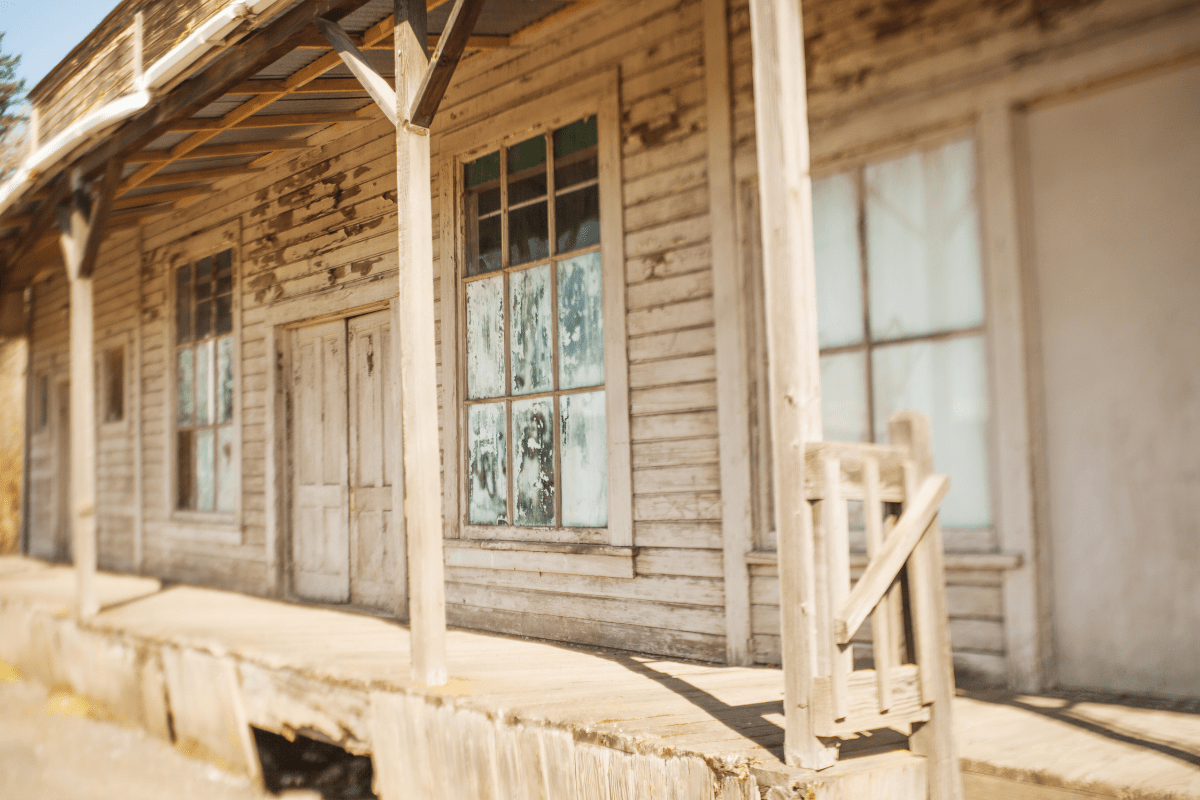Let me tell you something about Montana fishing… it's the kind of place where you'll simultaneously curse the wind, question your casting abilities, and then catch a fish so beautiful you'll bore your friends with photos for months. I've spent way too much time getting skunked on famous waters and stumbling onto hidden gems, so here's everything you actually need to know about fishing Big Sky Country in 2025.
The trophy waters everyone talks about (for good reason)
Before we dive into specific spots, let's be real about what makes Montana special. We're talking about over 5,500 miles of blue-ribbon trout streams, plus enough lakes to make your head spin. The fishing here isn't just good… it's the kind of good that makes grown adults call in sick to work when the salmonflies hatch.
Madison River: The 50-mile riffle that lives up to the hype
The Madison might be the most famous river in Montana, and honestly? It deserves every bit of that reputation. This river holds rainbow trout averaging 12-18 inches, with some serious brown trout pushing 24+ inches in the lower sections if you know where to look (hint: they're not in the easy spots).
Your best bet for access is Three Dollar Bridge FAS, sitting pretty on US Highway 287 about 40 miles south of Ennis. There's also Lyons Bridge if you're hauling a boat… and yes, the parking lot will be packed on weekends. Wade fishing works great throughout the upper river, but remember that float fishing is only legal from Lyons Bridge down to Varney Bridge. Don't be that person who gets yelled at by locals.
The prime season runs from June 20 through September 15, with the legendary salmonfly hatch hitting in late June. During this madness, tie on a size 6-8 Chubby Chernobyl and hold on tight. Fair warning: this river requires some skill. The fast, shallow water will humble you quickly if you can't get your flies where they need to be.
Local intel comes from The Tackle Shop in Ennis or Madison River Fishing Company. And if you really want to chase trophy browns with streamers, Kelly Galloup's Slide Inn is basically the university of meat-chucking.
Missouri River: Where 5,000 trout per mile isn't an exaggeration
Below Holter Dam, the Missouri River is just stupid with fish. We're talking 3,500 to 5,500 rainbow trout per mile. That's not a typo. It's one of the densest trout populations in North America, and on a good day, you'll wonder why you fish anywhere else.
Craig, Montana is your home base here. Launch at Wolf Creek Bridge (Highway 434, about 5.5 miles south) where you'll find actual facilities instead of just a dirt pullout. The beauty of this tailwater? It fishes year-round thanks to stable dam releases. March through May produces the biggest fish, while July brings technical PMD hatches that'll make you question everything you know about fly fishing.
This is boat country, not wading water. Shuttle services in Craig will save you the headache of vehicle logistics. The "Land of Giants" section near the dam is where dreams come true, especially if you're swinging streamers like Thin Mints on a two-hander from November through April. Stop by Headhunters Fly Shop in Craig for the daily scoop… these guys know every rock in that river.
DePuy Spring Creek: Where your ego goes to die
Alright, let's talk about DePuy Spring Creek near Emigrant in Paradise Valley. This private water charges daily rod fees (around $125, so maybe skip the morning latte for a month), but it's worth every penny if you want to test your skills against some seriously educated fish.
The wild browns and rainbows here average 14-20 inches, living in gin-clear water that'll show them your shadow from 40 feet away. April and May are magical when big rainbows run up from the Yellowstone to spawn. But here's the thing… you need to bring your A-game:
- 6x tippet minimum (7x if you're brave)
- 12-foot leaders that land like whispers
- Size 18-20 BWO emergers
- Patience of a saint
- Ego left in the car
Position yourself 30-35 feet across from your target fish and lead them by 3-4 feet. Your first cast is usually your only cast, so make it count.
Public waters that won't require a second mortgage
Not everyone wants to pay premium prices for premium water. Luckily, Montana's got plenty of public access that'll scratch that fishing itch without emptying your wallet.
Rock Creek: The blue-ribbon stream that feels like home
Rock Creek sits about 30 minutes southeast of Missoula, and it's everything a mountain stream should be. With 2,000 trout per mile including rainbows, browns, cutthroat, and protected bull trout, this water offers 50+ miles of public access through National Forest lands.
Hit up Norton Campground, Valley of the Moon, or Sawmill access points for some of the best wade fishing you'll find. June brings the salmonfly circus, August delivers the unique spruce moth hatch (seriously, one fly pattern for 2-3 weeks), and April teases you with March Brown drakes that only show for 1-2 hours daily.
Rock Creek Mercantile, less than a mile down the road, has the local flies and won't judge you for buying your third Chubby Chernobyl of the day after losing the others in streamside willows.
Yellowstone River: America's longest undammed river
The Yellowstone through Paradise Valley offers 150 miles of blue-ribbon water that's home to native Yellowstone cutthroat, plus plenty of rainbows and browns. Emigrant FAS has camping if you're making a weekend of it, while Mayor's Landing in Livingston works for day trips.
The famous salmonfly hatch runs July 1-10 from Livingston upstream. It's the world's longest emergence of these prehistoric-looking bugs, and yes, it's as crazy as it sounds. This is primarily drift boat water, though the first 17 miles near Gardiner offers solid wade fishing for those of us without boats.
Quick note on regulations: cutthroat are catch-and-release only from Gardiner to Pine Creek, and any smallmouth bass upstream from Springdale must be killed (they're invasive here). Dan Bailey Fly Shop in Livingston has been the local authority since forever… if they don't have what you need, you probably don't need it.
Bitterroot River: The river that'll make you work for it
Starting where the East and West Forks meet near Conner, the Bitterroot flows 84 miles north with about 700 trout per mile. Don't let that lower number fool you… this river regularly produces 23+ inch fish for those who figure it out.
Here's what's weird about the Bitterroot: it's 125+ feet wide but only averages 3 feet deep. It wades like a small stream but holds big-river fish. March Skwala fishing here is legendary (when everywhere else is still frozen), and September through October offers great fishing with almost nobody around.
Check out the 13 official access sites, with Bell Crossing and High Bank on the West Fork being local favorites. The Bitterroot Fly Company in Darby will set you up with maps and the honest truth about conditions. Locals call it the "Betternot" because these fish will test every skill you've got.
Lake fishing for when rivers aren't your thing
Sometimes you want to throw giant streamers at giant fish, or maybe just troll around with a beer in hand. Montana's got you covered there too.
Flathead Lake: The inland sea with monster lake trout
Flathead Lake is massive… 125,000 acres with depths hitting 370 feet. This place holds lake trout exceeding 30 pounds, plus plenty of yellow perch and protected bull trout. Thirteen public access sites mean you've got options, with Bigfork FAS (Highway 35, mile marker 31) and Somers FAS offering the best facilities.
Spring fishing means trolling near the surface before these deepwater dwellers head down to 100+ feet in summer. Then you'll need downriggers and more patience than I usually have. Important: the southern half requires a tribal permit from the Flathead Reservation. Montana FWP actually encourages keeping lake trout under 30 inches to protect native species, so fire up that grill.
Georgetown Lake: High altitude, high rewards
Sitting at 6,425 feet elevation about 18 miles west of Anaconda, Georgetown Lake is where you go when you want technical fly fishing on stillwater. Trophy rainbows commonly reach 16-26 inches, with brook trout exceeding 20 inches despite catch-and-release rules protecting them.
July and August bring world-class Callibaetis mayfly hatches… think slow retrieves and long leaders. The traveling sedge (basically a caddis on steroids) creates explosive surface action all summer. Launch at Philipsburg Bay or Piney Campgrounds, but note that the southeast shoreline stays closed before July 1 for spawning protection.
Winter ice fishing here is legit too, if you're into that whole freezing-your-butt-off thing.
The hidden gems most people miss
Let's talk about the waters that don't make every "Best of Montana" list but absolutely should be on your radar.
Kootenai River: The tailwater that never gets too warm
Below Libby Dam, the Kootenai offers something special: cold water year-round. While other rivers shut down with hoot-owl restrictions during summer heat, the Kootenai keeps fishing. Rainbow trout here average 12-16 inches, and that native redband strain fights like they're twice that size.
Here's the secret: look for fish holding 10+ feet from banks over submerged boulders where the water changes from light to dark green. A dry-dropper rig with Perdigon nymphs below a Purple Haze is money. Linehan Outfitting Company has this river dialed… they've won Orvis Outfitter of the Year twice, so yeah, they know their stuff.
Small mountain streams: Where 10-inch fish feel like trophies
Mill Creek enters the Yellowstone about 15 miles south of Livingston, and it's perfect small water. Fish average 8-10 inches with occasional 15-inchers in deeper runs. The area around Snowbank Campground fishes great mid-to-late summer after snowmelt.
Break out that 2 or 3-weight rod and keep your casts under 25 feet. These fish aren't rocket scientists… a Purple Haze or Royal Wulff will do the trick. Focus on:
- Slow water next to fast current
- Logs and undercut banks
- Foam lines (nature's buffet line)
- That one deep pool you know has a bigger fish
Licenses, regulations, and the boring (but important) stuff
Before you wet a line in 2025, let's cover the paperwork. Everyone 12 and older needs a license. Residents pay $21 annually plus $8 for conservation and $2 for aquatic invasive species prevention. Non-residents shell out $117.50 for a season license, which honestly isn't bad considering what some states charge.
New for 2025
Big changes this year, folks. The daily trout limit dropped from 5 to 3 fish in Western and Central district rivers and streams. It's about protecting the resource, and honestly, if you're keeping more than 3 trout, you're doing it wrong anyway.
Hoot-owl restrictions are a summer reality. When water temps hit 73°F for three consecutive days, fishing closes from 2 PM to midnight. This typically affects the Madison, Yellowstone, and Bitterroot in July and August. Plan your days accordingly… nobody wants to stress fish when they're already struggling.
Bull trout remain strictly catch-and-release except in specific waters requiring special catch cards. If you hook one (they're gorgeous), snap a quick photo and get them back in the water ASAP.
When to fish Montana (and what to throw)
Spring (March through May) means hungry fish and great hatches with minimal crowds. Blue-winged Olives and Skwala stoneflies get things started when most folks are still skiing.
Summer brings the famous salmonfly emergences on the Madison, Big Hole, and Yellowstone. June and July are prime time, but expect company. By August, switch to terrestrials… hoppers, ants, and beetles along grassy banks.
Fall fishing from September through November is my personal favorite. Brown trout get aggressive before spawning, and streamers like Woolly Buggers in size 6-8 become deadly weapons. Plus, the crowds are gone and the scenery is ridiculous.
Essential flies for your box:
- Pat's Rubber Legs (searching nymph)
- Chubby Chernobyls (does everything)
- Copper Johns (when fish are deep)
- Purple Haze (small stream magic)
- Thin Mints (for meat-eaters)
Making it happen
Look, Montana fishing can be intimidating with all the famous waters and technical talk. But here's the truth: these fish eat bugs and sometimes they're dumb about it. Sure, spring creeks will test your skills and some days you'll get skunked on "easy" water. That's fishing.
The best advice? Pick 2-3 waters to really learn instead of trying to hit everything. Book guides for your first day on new water (it'll save you years of learning curve). Check current conditions before you go… Montana FWP's website has real-time updates on restrictions and closures.
Whether you're stalking rising fish on DePuy's Spring Creek or chucking streamers on the Missouri, Montana offers the complete spectrum of fly fishing experiences. The scenery alone is worth the trip, and the fishing? Well, let's just say there's a reason people plan their whole year around a week in Montana.
Now stop reading, check those hoot-owl restrictions, and get out there. The fish aren't going to catch themselves… though in Montana, sometimes it feels like they're trying to.





